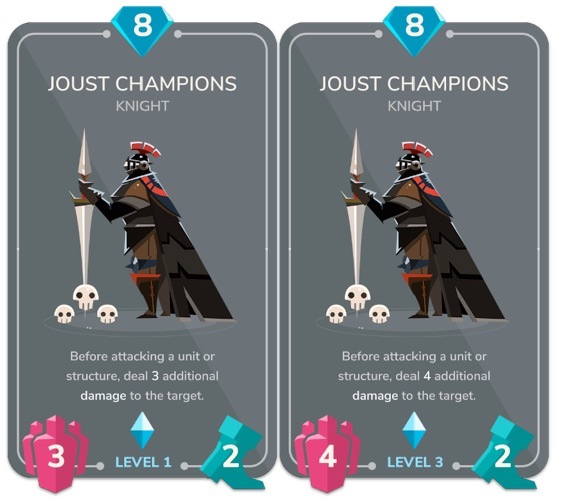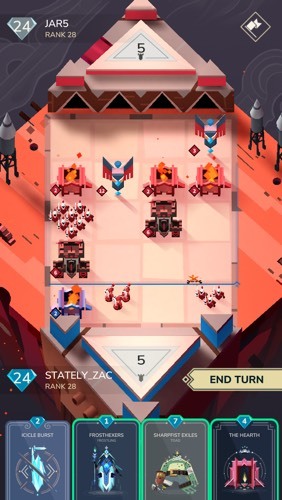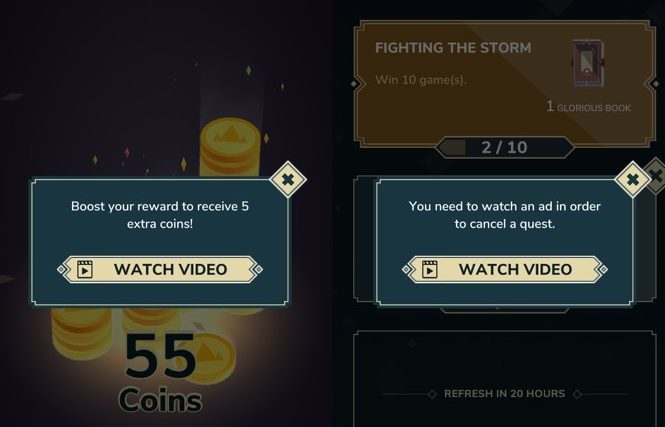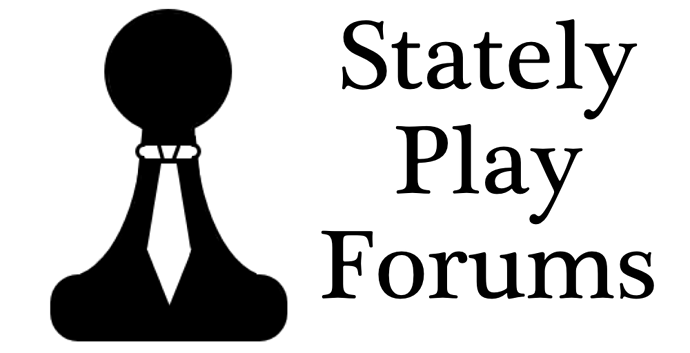Originally published at: http://statelyplay.com/2017/09/27/review-stormbound/
iOS Universal, Android •
I’ve given up being mad about freemium games. Its akin to fighting the tide, doesn’t really have any impact, and, after all, most freemium titles aren’t games at all but psychological engines devised only to part people from their money. Occasionally, however, a freemium title releases that, deliberately or accidentally, is actually a good game and that old rage begins to brew.
Stormbound is a strategy CCG developed for Kongregate by Paladin Studios in the Netherlands. It’s a vibrantly styled, unique take on the CCG with some very interesting gameplay elements. It also has a freemium pay-engine strapped to it, by Kongregate I presume, that will make you weep for what could have been a true gem. It’s not as sad as the ending of Old Yeller, but you will ponder how greed can so often overcome the desire to less egregiously monetize a very good game.
[caption id=“attachment_3155” align=“aligncenter” width=“337”] The Stormbound gameboard[/caption]
The Stormbound gameboard[/caption]
Stormbound is a mashup of CCGs and lane defence titles, such as Plants v. Zombies. The game plays on a 4 x 5 vertical battlefield with each player having a goal at either end. Cards are played, placing varying numbers of soldiers on the field which dutifully advance toward the enemy goal each turn. As troops advance they push forward a start line that allows, if your troops survive, you to deploy units closer to the opponent’s goal. Ten troops in the opposing goal wins the match.
The game begins with either three or, if not the first player, four mana which accumulates an additional point each turn, Hearthstone-style. Unlike Hearthstone, however, there is no upper cap to the amount of mana you can earn, so as games stretch on, you’ll quickly find the situation allows for playing all the cards in your hand. That said, the maximum hand size is only four cards with only two cards in the game allowing draws during your turn. Thus, for all intents and purposes, the maximum number of cards you can throw down each turn is capped at 4.
Cards are either units or spells and each has a mana cost, with unit cards having additional stats of strength and movement. The strength of a unit is the number of troops deployed on when played, and movement is the number of squares troops move when initially placed. The initial move can be anywhere from 0 to 2 spaces, but after that it will trudge only one meager space per turn toward the enemy goal. There are also buildings which lack a movement stat and tend to stay in one place when played because, well, they’re buildings.
Units played to the board will attack enemy forces to their front, left, then right. After the initial placement, however, they will only attack units directly in their path. This allows for some interesting plays near your own goal, as you can take out several enemy units at once. Of course, experienced players will stagger troops to avoid falling into this trap.
[caption id=“attachment_3171” align=“aligncenter” width=“569”] Cards can be levelled up to increase their powers[/caption]
Cards can be levelled up to increase their powers[/caption]
Stormbound has, for a digital CCG, a small base of only 96 cards in its initial release. There are 40 Neutral cards that can be used in any deck and four sets of 14 faction specific cards. The factions in Stormbound are the Ironclad, a set of mechanically inclined rats, the toads and ravens of the Shadowfen who use poison to cripple their opponents, the undead Swarm which uses death to power their abilities and the dwarves and Frostlings of the Winter Pact. The art in the game is wonderful and oddly evocative of Eric Torres’ brilliant Iconica card game with each faction using a small, distinct colour palette, making the art whimsical and fresh.
Oddly, there are no social features features to be found, including even basics such as sending emotes. After playing Hearthstone and Duelyst it seems rude to not be able to say ‘GG’ or comment on a good play. The game also lacks a help system or details into its own inner workings. Its not difficult to hash out the details yourself, but even a screen or two of rules would be helpful.
Deck building revolves around using faction specific and neutral cards, but there are no purely neutral decks in the game. This doesn’t pose any problem on its own, but when you first start playing your access to faction cards is fairly limited meaning your decks rely heavily on neutral cards, keeping the flavor of each faction a mystery. This is where the monetization model begins to impact the game. Acquiring cards is a slog unless you want to spend money. For $99 you can buy 73 cards and quickly jump ahead of the power curve. You can buy invididual packs of cards, but only for in-game currency which means playing through game after game to build up your collection.
Cards come in four rarities, common, rare, epic and legendary, and only 35 of the initial 96 cards are common, so you can expect to grind like a millstone for higher rarity cards. Otherwise, you can open up your wallet. You can also use duplicates or in-game currency to level-up a card, making it more powerful. The Execution card, for example, does three damage at level 1, four at level 2, and five at level 3. Does this unbalance the game? I’ve not seen evidence of it thus far, but I imagine it could be an issue when cards are added in future expansions.
[caption id=“attachment_3162” align=“aligncenter” width=“282”] I lose this game. Badly.[/caption]
I lose this game. Badly.[/caption]
Each card has a special ability adding new wrinkles to the game. Some units freeze bordering troops, some drain strength from other units, and some can expand their strength based on the number of units your opponent controls. Only five cards in the game–all Neutral faction cards–don’t have a special ability, so a large part of Stormbound is maximizing the power of these abilities. Board positioning, and relative position of enemy units, is critical to most card abilities. Thus, even as you gain enough mana to cast all your cards, you’ll be spending a fair amount of time determining the best order and placement of your hand. The number of choices you have is surprising when you consider the small board and hand size, and it’s this that makes Stormbound compelling enough to keep grinding away. Speaking of grinding…
What really grinds my gears about Stormbound is the freemium spend-machine added to the game. There are special offers for cash and individual cards and packs for coins and rubies. You get coins, slowly, by winning games and ranking up or you can purchase them with rubies. Rubies are available via cold hard cash or as a reward every five ranks starting at rank 25. There are also fusion stones in the game as well but I have yet to figure out how to acquire them other than by working through the ranking ladder. You can also gain cards and coins by finishing daily quests. There are only three of these active at a time, but you can easily dismiss an unwanted one by watching an ad. There are words to describe this situation but I am certain that our editor won’t allow them to be used. [Not true. In fact, they’re encouraged. -ed.]
[caption id=“attachment_3160” align=“alignnone” width=“665”] Say What Now?[/caption]
Say What Now?[/caption]
Stormbound is a very good CCG with a savage disconnect between the game being offered and the way Kongregate and Paladin are trying to make money. My initial thought on seeing Stormbound and its rubies, coins, and fusion stones was to dismiss it. Typically when you see this type of currency scheme, it means the development effort was focused on creating a virtual slot machine rather than a decent strategy game. Stormbound is definitely the latter, however, and is quite decent. Despite my initial reservations, Stormbound has been my obsession of the week, so why the publisher and developer thought it necessary to burden it with the standard freemium BS is puzzling. This game could easily stand on its own with a “cards for cash” payment model even given the small size of the card pool, especially since Duelyst, the current king of positional card gaming, is still MIA on tablets. It’s a damn shame.
https://youtu.be/zqppYCf6hTI